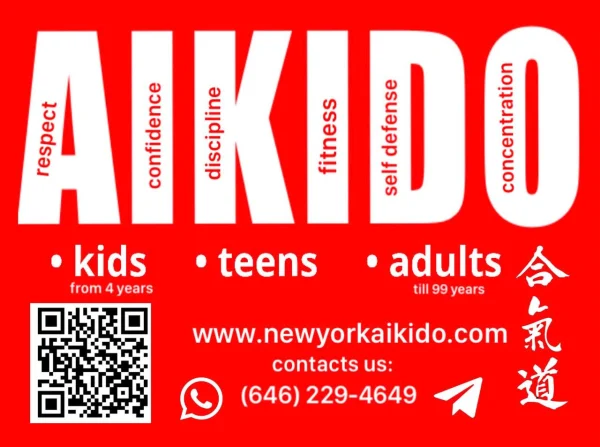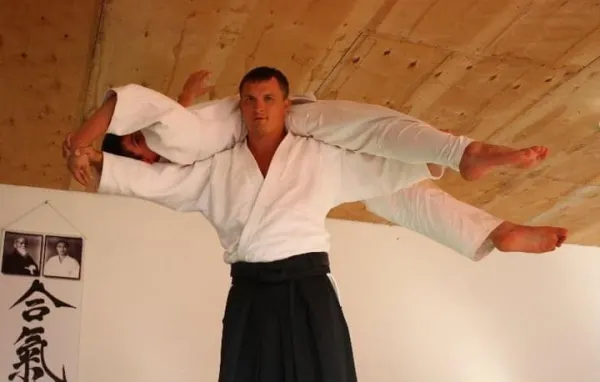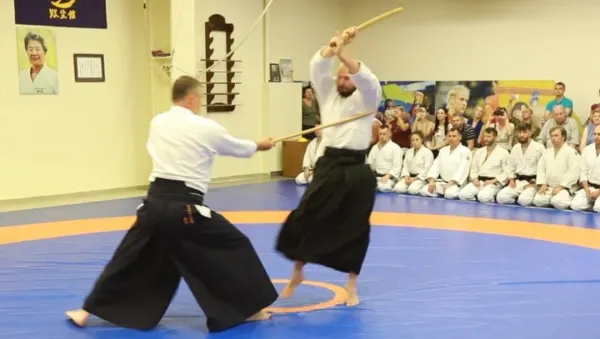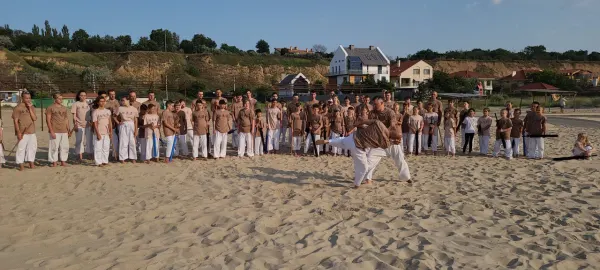New York Aikido, Inc. D/b/a Gudokan Dojo
About
The New York Yoshinkan Aikido Dojo was founded in 1994 by David Fryberger Sensei as the only school of Aikido in New York City teaching Gozo Shioda Sensei's Yoshinkan style. Fryberger Sensei 6th Dan is now the resident teacher of Aikido on Ventura in California. The New York Yoshinkan Aikido Dojo is now under the instruction of Roman Solonyy 4th Dan. The New York dojo is affiliated directly with the Headquarters Dojo and remains as the only school in the NYC area teaching the Yoshinkan style. Our philosophy is one of dedicated training in a positive, non-competitive environment with an emphasis on the fundamental movements of Aikido.
YOSHINKAN AIKIDO
One of the earliest and most talented students of the founder of Aikido was Gozo Shioda. He was very energetic and studied with O’Sensei Ueshiba for many years. With the masters blessing he founded the Yoshinkan style of Aikido.
Yoshinkan literally means “House for the cultivation of the spirit”.
OUR METHOD
Yoshinkan Aikido is known for its clear, precise movement resulting in effective and powerful techniques that do not rely on strength to execute. It is also known for its step by step teaching method, which comes to us from Gozo Shioda Sensei, founder of Yoshinkan Aikido. We develop our knowledge in this art through our study of the basic movements and techniques.
BASIC MOVEMENTS
The key element of our teaching system is the use of six kihon dosa (basic movements). These movements are the “building blocks” for all techniques. They embody the essence of moving forward, turning and pivoting while maintaining a“centerline” to the body. Through the study of the kihon dosa, we learn to move in a relaxed way, with focus on balance. As a student’s skill in the kihon dosa grows, one naturally develops a sense of balance, inner strength, agility and self-confidence.
BASIC TECHNIQUES
There are nearly 150 kihon waza (basic techniques) to defend against a variety of attacks. We learn to defend ourselves from punches, strikes, grabs, knife attacks, etc. These defensive techniques end by throwing the person or pinning them on the ground. The formal basic techniques serve as a basis for advance training in freestyle. With this superb teaching method, and our emphasis on safety and body mechanics, students can learn powerful movements while developing harmony both within themselves and with others.
FREESTYLE TECHNIQUES
Oyo waza (formal continuous techniques) introduced to students achieved certain technical level in basic techniques and became fluent with Ukemi wasa (breakfalls). These techniques teach students to harmonize with an attacker’s power at constantly increasing rate of speed. At this point students focus shifts from learning movements to perfecting them and improving their reaction and balance.
Jiyu waza (freestyle continuous techniques) is the highest level of formal aikido training. Student expected to perform various techniques against an attack or attacks prescribed by sensei. This type of training promotes further development of technique, balance, agility and proper timing (reaction to attack).
SELF-DEFENSE
Goshin waza (self-defense techniques) are based on the above listed levels of aikido training. Even though, goshin waza employs the same basic principles as formal aikido training, it is taught completely separate from regular aikido training and done at a special seminars or at designated classes or parts of a class. This separation required because of differences in applicable phylosophy and for maximizing safety during this training.
BREAKFALLS
Ukemi waza (breakfalls) are indispensible part of martial arts training that involves throwing techniques. In aikido ukemi waza is specifically important because it serves primarily as a method to avoid dangerous joint locks or, in some instances, breaking bones. Yoshinkan aikido stresses the importance of safe landing and quick getting back on both feet. This concept is crucial to martial art training and idea of being always ready to an attack.
I love sharing with my students aikido principals that are applicable to our everyday lives. Aikido is much more than a martial art. It provides a distinctive view point on our life and provides tools to improve it. I am happy to see my students improvements and I am committed to do everything I possibly can to help them with their progress.
Specialties
Frequency
Clients age
Coaching topic
Previous coaching experience
Photos and videos






Reviews
Habib
Volodymyr M.
Frequently asked questions
What is your typical process for working with a new student?
A new student is given individual attention during warm up and personalized training plan until the student is ready to join regular class training. I take into account student's prior experience, physical condition and limitations. Each student is given an opportunity to develop at their own pace. Home work assignments are given to those who interested in best possible results.
What education and/or training do you have that relates to your work?
I began his study of Aikido in Ukraine in 1999 under Roman Limarev sensei, 5th Dan. I have been studying and teaching Aikido in NYC under David Fryberger sensei, 6th Dan guidance since 2004. I hold 4th Dan (black belt degree) from Aikido Yoshinkai Foundation since March 2016 and allowed to grade students to the rank of 2nd Dan (black belt degree).
Do you have a standard pricing system for your lessons? If so, please share the details here.
Tuition
Adults (14 y.o. and older) - $165.00 per month (unlimited classes)
Adults (14 y.o. and older) - $80.00 per month (Saturday - only)
Kids (under 14 y.o.) - $60.00 per month
Mat fee - $15.00 per class
Family and group discounts are available. NYPD, FDNY, EMT, and other discounts are available.
How did you get started teaching?
I practiced judo when my friend, high profile judo practitioner, introduced me to his aikido sensei. I came to the dojo to check the class out, saw the class, spoke with Sensei, and I have never stopped practicing aikido since.
What types of students have you worked with?
I have worked with kids as young as 5 years old and adults as young as 70 years old. Aikido is a life-long journey, there is no limit in age or fitness level. Everyone can start doing aikido, and, as long as you give your best to it, you will succeed.
What advice would you give a student looking to hire a teacher in your area of expertise?
Take an introductory class and ask as many questions about the art as you can come up with. After class, speak with other students and see what they think about the school and the teacher.